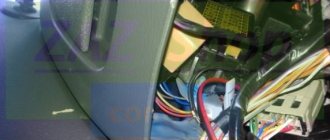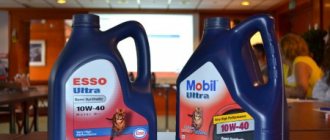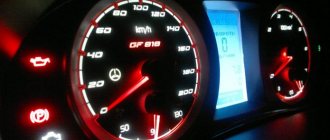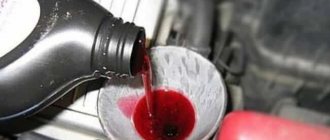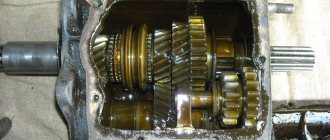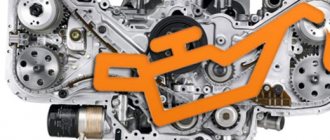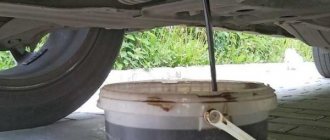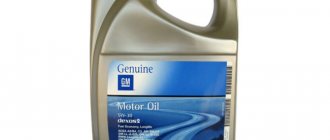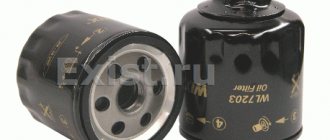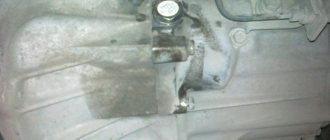How to drain oil from an engine, why does overflow occur and how to pump out excess oil?
Details Created: 08/21/2017 18:30
From our material you will learn how to drain oil from the engine, why overflow occurs and how to drain excess, how to pump out oil through the dipstick if draining is impossible.
Changing the oil is a fairly simple procedure, and many car enthusiasts do it themselves. However, if you don’t know some of the nuances, you can make a common mistake: overfilling the lubricant above the permissible level. The option “you can’t spoil the porridge with oil” is not suitable for the engine. Excess can create additional problems:
- The balance of the air-to-fluid ratio in the crankcase will be disrupted. This results in excess lubricant pressure. Oil seals designed for the standard size are not able to withstand the pressure and become deformed. As a result, we get leaks on the shafts coming out of the motor.
- Excessive pressure can damage the oil filter element. As a result, until the next routine maintenance you will be left with virtually no lubricant cleaning
- Excess oil will get inside the piston and overheat, coming into contact with its hot walls. All this carbon deposits fall back into the crankcase and are deposited on the walls in the form of slag. Then the oil lines become clogged.
- The setting of hydraulic valve compensators (they are normally filled with engine oil) or timing chain dampers (for the same reason) may be disrupted.
Based on materials from the website Skrutit-speedometr.ru. The company’s specialists will help you rewind your speedometer in a high-quality manner without traces of intervention in Moscow and the Moscow region.
What can an elevated level lead to?
Exceeding the oil level above the permissible norm can lead to the following consequences:
- Reduced power level.
- Increased fuel consumption as the load on the crankshaft and pistons increases.
- Bubbling of lubricant by the crankshaft, which leads to foaming and an increase in the level of gases in the oil above the permissible level of 7%. The result is the appearance of knocking noise from hydraulic elements: tensioners, supports, pushers.
- Increased oil consumption.
- Blue smoke may appear from the exhaust system.
- The crankshaft flywheels run out against the oil, the latter foams, and the life of the crankshaft decreases.
In addition to those discussed above, other problems are possible:
- starting difficulties;
- the appearance of carbon deposits on engine elements;
- reduction in oil pump life;
- deterioration of the power unit;
- ignition problems;
- contamination of the catalyst and muffler;
- failure of spark plugs;
- improper operation of the engine crankcase ventilation system (EGR);
- the appearance of toxicity in the exhaust and other defects.
Exceeding the volume of lubricant is especially dangerous on older cars due to wear of the CPG and an increased volume of crankcase gases. The latter capture excess lubricant and carry it to the engine intake. This, in turn, leads to increased consumption and excessive exhaust smoke.
A turbocharged engine is also afraid of excessive amounts of oil, which in some models can get onto the walls of the compressor scroll and harden there.
As a result, the compressor wheels will touch the hardened deposits, increasing the load on the shaft bearings. They will wear out quickly and the turbine will fail.
Why does oil overflow occur?
You have conscientiously drained the waste, replaced the filter, tightened the drain plug and filled in fresh lubricant according to the regulatory instructions. Then you take out the dipstick and observe in horror the level a few millimeters above the maximum. Where did the excess oil come from?
You have filled the amount calculated for an empty (more precisely, dry) engine crankcase. However, they did not take into account the fact that in the cavities, on the horizontal surfaces of the crankcase, and finally, in the hydraulic compensators and dampers, there is a little old lubricant. This “little” can reach 200-400 ml.
Is the maximum really exceeded?
Only a narrow range of conditions under which measurements are made are acceptable:
- There is a flat area under the wheels.
- Tire pressure is the same.
- The machine's load level is empty.
What is especially important is the instructions in the instructions at what temperature of the engine to take measurements. Judge for yourself how significant this fact is - the lubricant expands when heated, and this is a different volume and a different length of the oil trace on the dipstick. Typically, the operating manual gives a green signal 5-10 minutes after stopping a fully warmed-up engine. However, some automakers allow you to trust control marks only when cold. And in such cars, a level above “FULL” when hot is absolutely normal.
Attention! If an overflow is suddenly detected on a diesel engine + the car is actively consuming fuel - urgently go out onto the highway and burn through the particulate filter naturally. The level has increased due to fuel entering the engine crankcase through the oil scraper rings. This occurs as a result of the large number of unsuccessful active regeneration attempts that the ECU launched the day before.
If all the requirements are met and the oil trace is above the maximum, then we have exceeded the norm. There is nothing good about this.
How to drain excess oil from the engine?
It would seem that the answer is on the surface (more precisely, under the bottom). Open the plug, drain the oil, and fill it back in a smaller quantity. From a technical point of view, this is the right decision, but draining the lubricant while keeping it clean will not work. Therefore, we remember this method as a last resort and never use it. In general, just drain the excess, not all the oil.
Another option from the treasury of garage craftsmen (nevertheless, tested in practice) is draining the oil filter. If you tilt the car strongly (driving onto a curb) in the direction opposite to the location of the filter, you can easily unscrew it and pour out the liquid. Up to 200 ml of oil is placed in the filter jar. Then carefully put it in place.
The method is not suitable for all cars. In addition, there is a small risk of contamination.
The excess oil is carefully drained through the plug on the crankcase. Just don't turn it off completely. It is enough to unscrew to the middle of the thread, and the oil will begin to flow out in a thin stream. The method requires patience, but it is effective and safe for the engine.
Verdict
The lubricant level should be between the MIN and MAX marks - this is what the manufacturer assures. Experts also talk about this and inform car owners about the consequences of overfilling oil when replacing it in a vehicle engine.
Exceeding the maximum leads to foaming of the oil emulsion, which causes knocking on hydraulic compensators in engines with automatic adjustment of the gaps between the valve and the cam. Loss of power, oiling of spark plugs, squeezing out of oil seals, smoking and excessive load on the oil pump. These arguments are enough to make you take a more responsible approach to replacing the oil composition.
How to pump oil out of the engine if draining is impossible?
The only possible way is a vacuum pump. But these are only available at service stations; to use them in the garage, you will have to shell out a tidy sum. You will have to pump it out through the dipstick; the oil filler neck is not suitable for this.
You can make something like a vacuum pump yourself:
- From a pastry syringe. The pressure is low, but the volume is good. You can pump out 200-300 ml in one go.
- From a medical syringe. The situation is the opposite: excellent pressure, but small volume.
- From a rubber syringe or PET bottle with thick walls. If the container is compressed, back pressure is created when the shape is restored.
Tips and tricks
By the way, in order to approximately determine how much volume will need to be pumped out, you need to remember how much oil is usually poured into the engine so that the level is normal. For example, if 3.7 liters need to be poured into the engine, then a level above the maximum on the dipstick will indicate an overflow of about 250-300 ml, that is, about 4 liters of lubricant were poured into the engine. This means that in the case of a 20 cc syringe, you need to make about 12 approaches to pump out such excess.
The final step will be to properly check the engine oil level. If the level is in the middle or slightly higher, the unit can be started. Next, you need to warm up the engine, then be sure to place the car on a flat horizontal platform. After this, you should wait about 15 minutes and then check the lubricant level.
If there is a need for topping up, certain rules should also be followed. Oil is added little by little, and not at once, after which you also need to wait until the lubricant drains into the pan. If in the end it turns out that the level is slightly above average, this can be considered normal.
Checking the oil level in the engine, determining the exact indicator. When is it better to check the lubricant level, on a cold or hot engine. Useful tips.
The main reasons why the oil level in the engine may increase. Why is the level increased if there was no oil overflow? Diagnostics, advice.
Should the engine consume oil and what oil consumption is normal for the engine. Increased lubricant consumption, main causes, frequent malfunctions.
How to add oil to the engine correctly. Topping up “on a cold one”, adding lubricant to a hot engine. What oil can be used for topping up, useful tips.
Why does the low oil pressure warning light come on at idle or while driving? Diagnosis of the malfunction, checking the oil pressure sensor.
The main reasons why problems arise with oil pressure in a diesel engine. What features should be taken into account when diagnosing, recommendations.
How to pump oil out of an engine through a dipstick in a garage?
For example, let's take a medical syringe. Additionally, you will need a tube of the appropriate diameter. You can use an IV kit. In this case, it is easy to control the movement of liquid through transparent stacks, and the hose fits under the syringe. But such a tube is too soft and it is difficult to lower it to the oil level in the crankcase.
You can use a rubber tube: this is used in the windshield washer system. The procedure is quite simple: pump out the lubricant, pouring it into a clean container. Then, checking the level, fill the required amount back if you suddenly overdid it.
- Back
- Forward
Comments
0 ZniUS 04/19/2021 07:14 Medicine information leaflet.
Short-Term Effects. where to buy cheap lyrica without insurance in US All news about medicine. Read here. Quote
0 Marsha 07/08/2020 07:32 If I were you, I wouldn’t do that. Have a look at my website... car registrars: https://vpi-car.at.ua/publ/sabvufer_svoimi_rukami/1-1-0-17
Quote
0 Maryjo 07/06/2020 08:20 This doesn’t quite suit me. Maybe there are other options? Here is my blog: foreign cars (Chantal: https://vpi-car.at.ua/news/masla_motornye/2019-08-27-4)
Quote
+1 Rinat 05/03/2019 19:20 I’ve been using a sititek pump to drain oil for several years now. A special device allows you to quickly perform the procedure at home. Of course, due to lack of experience, I would not recommend draining the liquid yourself for the first time.
Quote
0 Valery 11/30/2018 09:04 Please call back at 8 (499) 322-46-85, Valery.
Quote
Update list of comments RSS feed of comments for this entry
Motorcycles
The problem of exceeding the oil level is relevant not only for cars, but also for two-wheeled mechanized vehicles, as well as ATVs.
This applies to the vehicles listed above, both four-stroke wet-sump power units and two-stroke ones (in which oil is added to gasoline).
For 4-stroke engines
Each engine has a special breather installed to remove crankcase gases. While driving, excess oil (especially on a bad road) will come out through it. As a result, normal loss of lubrication occurs.
The remaining problems are similar to those listed above.
For 2-stroke engines
The same consequences as discussed above are relevant here, but we are no longer talking about exceeding the level.
For such engines, it is important to maintain the correct proportion of 1 to 50. This means that for 5 liters of gasoline you need to add about 100 million of engine lubricant.
Compliance with this rule is very important, because the appearance of excess oil leads to the following problems:
- The appearance of soot.
- Throwing candles.
- Difficulty starting the motorcycle engine.
- Malfunctions on the road (the engine periodically stalls).
- The appearance of bluish smoke from the exhaust system.

